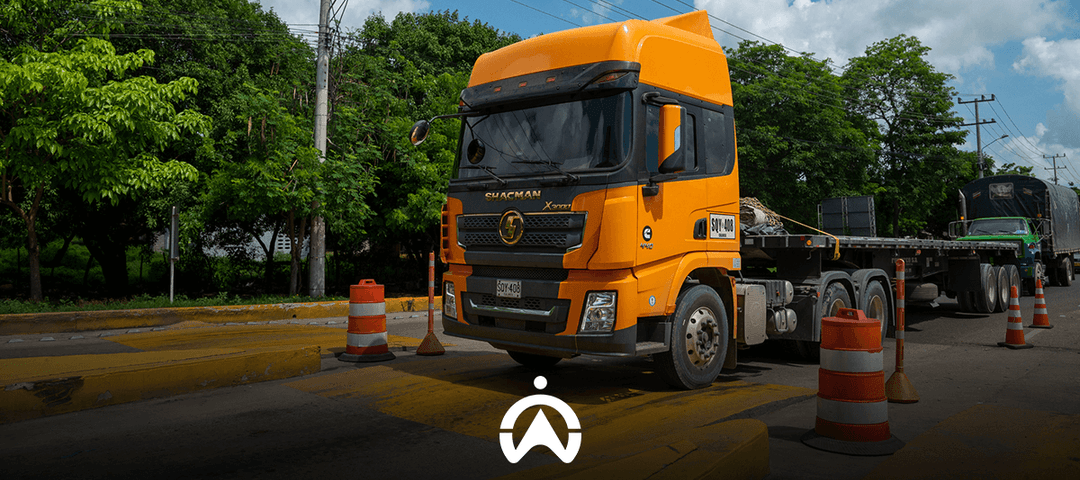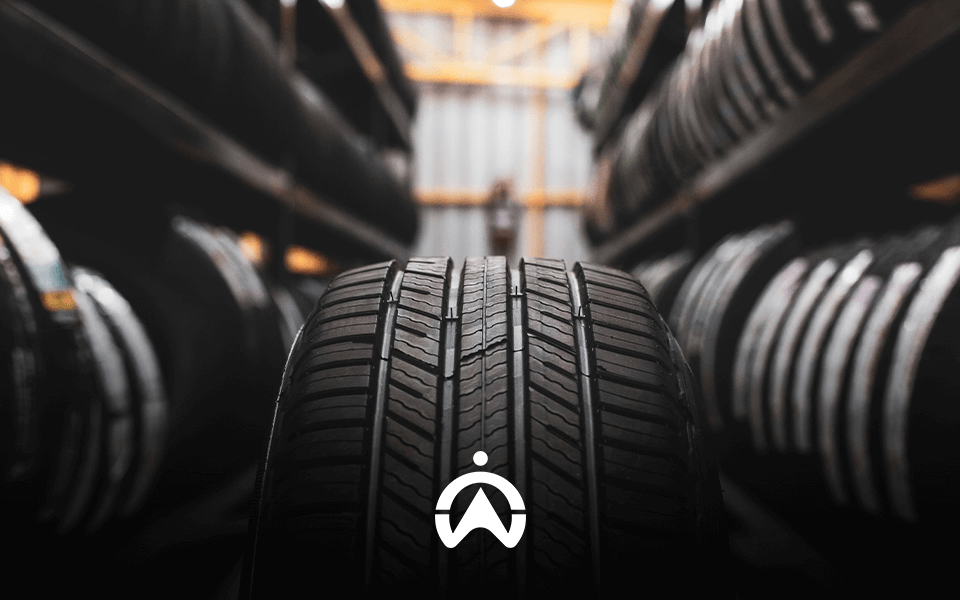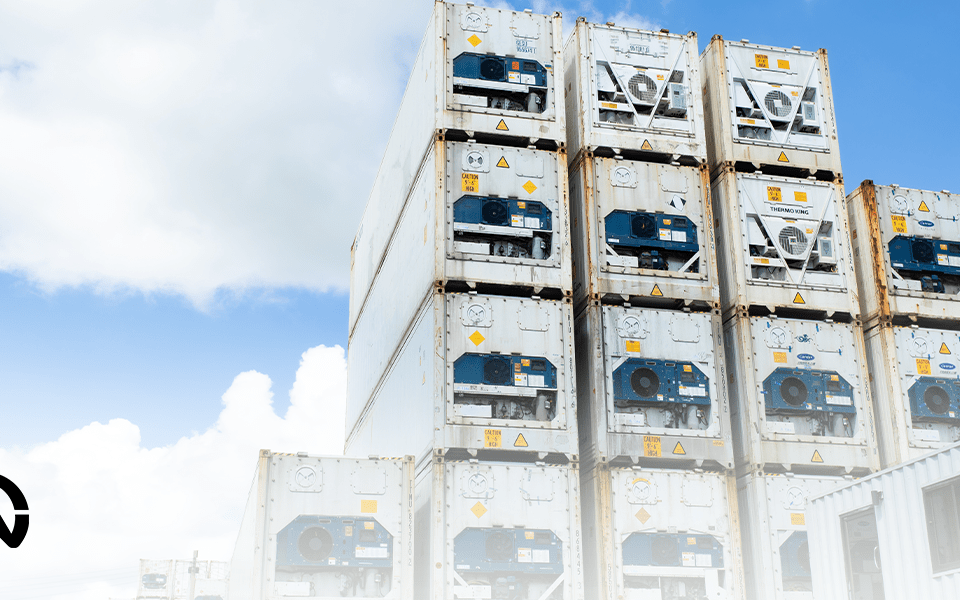Curb Weight vs Gross Weight: The Insight You Need to Empower Your Fleet
Overloaded vehicles go beyond “doing more with less time”, as overloading can harm your entire fleet operation.
Are you ready to empower your fleet management? Then read on to find out exactly what these terms mean and learn what the difference is between curb weight and gross weight.
What is curb weight?
Curb weight, also known as dry weight, is essentially the car’s skeleton weight when fully operational but completely empty, so without passengers, cargo, or even your favourite travel mug.
Here’s a closer look at the components and significance of curb weight:
What’s included in curb weight?
- The core: This includes all parts that make it a vehicle, including the engine, wheels, body panels and transmission parts.
- The vehicle’s standard features: This is everything that comes pre-installed in your vehicle and is essential for everyday driving like air conditioning, safety equipment such as airbags and seatbelts, and even your audio system.
- The vehicle’s essential fluids: This is the weight of important liquids that are crucial to car functioning and include engine oil, coolant, and brake fluid.
Why is curb weight so important?
- Effective comparison to similar vehicle models: By comparing curb weights of similar models, you can get a better idea of how they might stack up in terms of performance when loaded with passengers and cargo.
- Simplifying performance prediction: Knowing your vehicle’s curb weight helps you predict how it will function under various conditions, including acceleration, braking, and fuel efficiency.
- Aids in choosing the right vehicle: When considering tasks like towing or carrying heavy loads, understanding curb weight becomes crucial for selecting a vehicle with the required capacity and power.
Now that we’ve explored curb weight, let’s learn more about vehicle gross weight.
What is gross vehicle weight?
John is on his way to deliver a washing machine to a customer using one of his fleet vehicles. The car is loaded with the machine, some equipment to install it, and a few other tools. This is a prime example of gross vehicle weight (GVW), which describes the total weight of your loaded vehicle when it is ready for operation.
Let’s dive deeper into the components and importance of gross vehicle weight:
What’s included in gross vehicle weight?
- Curb weight: As explained, this refers to the car’s weight when empty, but with all its standard equipment, fluids, and a full petrol tank.
- Cargo weight: All the goods, tools, or anything else you’ve packed into the vehicle.
- Passenger weight: The combined weight of all vehicle passengers.
Why is gross vehicle weight so important?
- Enhances road rule adherence: Being aware of your gross vehicle weight helps you adhere to weight limits on roads and bridges, which keeps your drivers and other roadgoers safe.
- Improves vehicle safety: Maintaining proper weight distribution when operating vehicles and delivering goods significantly reduces the likelihood of accidents caused by poor vehicle control, excessive idling, and increased wear and tear.
- Optimises fuel efficiency for trips: Vehicles that have excessive gross vehicle weight have been shown to consume more fuel.
- Simplifies future planning: Knowing the GVW helps you effectively calculate how much cargo your vehicle can safely carry without it being overloaded.

Curb weight vs. gross weight
Let’s take a look at the differences listed above in table form:
How does vehicle weight affect fleet performance?
No one vehicle weight measurement is more important than the other, as they are both crucial and beneficial to fleets in various ways. The information obtained helps fleet managers make informed decisions on how to lower a vehicle’s weight, which is important for the following reasons:
- Vehicle performance: A lower curb weight translates to a lighter vehicle and leads to:- Improved acceleration: Lighter vehicles require less power from the engine to reach desired speeds, resulting in quicker acceleration. This improves response time and overall driving experience.
– Enhanced handling: Lighter weight leads to easier vehicle handling. Drivers can respond more readily to steering input, making it easier to control and navigate challenging road conditions.
– Shorter braking distance: Lighter vehicles require less force to stop, resulting in shorter braking distances and improved safety by reducing the risk of rear-end collisions.John, for example, overloads his fleet vehicles, leading to his drivers showing signs of irresponsible driving behaviour like harsh braking. This, in turn, negatively affects driver safety and fleet longevity.
- Fuel efficiency: A direct correlation exists between weight and fuel consumption. Vehicles with lower curb weight experience:- Reduced energy expenditure: Lighter vehicles require less energy from the engine to maintain momentum, leading to better fuel economy. This translates to fewer fuel stops.Let’s look at John again, who has now started overloading his vehicles so he can do more in fewer trips. Although this may seem like a smart thing to do to make the most of his resources, his vehicles are burning more fuel than they should, translating to higher operational costs and more frequent fill-ups.
- Safety: Maintaining proper weight limits is crucial for safe vehicle operation. Exceeding the gross vehicle weight can compromise safety by:- Impacting handling: Overloading can adversely affect handling, making the vehicle unstable and accident-prone.
– Extending braking distances: Heavier vehicles require a longer distance to stop, increasing the risk of collisions.
– Putting stress on components: Overloading can strain the vehicle’s suspension, brakes, and tyres, potentially leading to breakdowns and safety hazards.
Let’s return to John one more time. His tendency to overload his vehicles also seems to be impacting fleet safety. As a result, John is seeing an increase in harsh driving behaviour, such as harsh braking, which not only puts his drivers at risk but also causes his vehicles to require more unscheduled maintenance.
These reasons and examples show how important it is for vehicles to not be overloaded, as it impacts the entire fleet’s functioning and efficiency. But how do you ensure that your vehicles don’t exceed their maximum weight? The answer is measuring its weight.
How can you measure your vehicle’s weight?
Now that we’ve looked at the importance of knowing your vehicle’s weight and why keeping it low is so crucial, let’s see how you can actually measure it:
- Weighbridges:Weighbridges, also known as truck scales, are large, specialised scales designed to weigh an entire vehicle, including its content. The vehicle is driven onto the weighbridge and weighed empty to establish its curb weight. The vehicle can then be loaded and re-weighed on the weighbridge. These two calculations are used to determine the weight of the cargo that is being transported.
- On-board scales:On-board scales are devices that can be used to estimate the approximate loaded weight of a vehicle. They help determine the vehicle’s weight distribution and total weight by fitting sensors and electronic components directly onto the vehicle itself. Unlike weighbridges, which are stationary and only located in specific areas, on-board scales can measure vehicle weight at any place and any time, even when the vehicle is in motion.
- Weigh-in-motion systems:Weigh-in-motion (WIM) systems are technological tools designed to measure vehicle weight while in motion. By driving over sensors that are either “embedded” in the road or mounted above it, the system is designed to capture a vehicle’s weight data at normal traffic speeds.
If you don’t have access to these sensors, your next best bet is a fleet management system. But before we get into this multi-purpose solution, let’s look at fleet management in general.

What is fleet management?
Fleet management is the complete oversight of a company’s fleet of vehicles, ranging from maintenance to fuel consumption monitoring and keeping an eye on each vehicle’s location to ensure drivers are driving safely. These are all crucial for streamlining operations and ensuring the fleet runs smoothly, cost-effectively, and according to regulations.
How fleet management helps you identify heavy vehicle weight
In the world of fleet management, ensuring your vehicles operate within their designated weight limits is crucial, and a few key indicators could help with this. These indicators can be identified with a fleet management system:
- Fuel consumption:There is a direct correlation between vehicle weight and fuel consumption. Lighter vehicles require less energy from the engine to maintain power, which results in better fuel economy. However, heavier vehicles need more power to move the additional weight, increasing fuel consumption. When a vehicle’s engine needs to work harder to maintain speed and overcome additional resistance, it translates to burning more fuel to generate power. If your fleet has been consuming more fuel following an increase in cargo, your vehicles might be overloaded.
- Maintenance:Exceeding a vehicle’s maximum weight puts excessive stress on various components, including tyres, suspension components, brakes, and the engine. This leads to premature wear and tear, which means vehicles require more frequent maintenance and shortened lifespans.This also increases the risk of unplanned breakdowns, which overloaded vehicles are more susceptible to. An increase in overall maintenance can suggest a vehicle is overloaded. Some tell-tale signs include:- Brake system issues
– Engine issues, including frequent overheating
– Frequent tyre replacements and irregular tyre wear
– Suspension and steering issues
- Driver behaviour:While harsh driver behaviour isn’t a clear indicator of an overloaded vehicle, certain driver behaviours can raise a red flag, indicating that the vehicle may exceed its weight limits. These include:- Excessive swerving:An overloaded vehicle is more difficult to control, leading to dangerous swerving, which can worsen when a driver attempts to turn or is travelling on uneven roads.
– Harsh braking: An overloaded vehicle can experience increased braking distance and instability due to its weight, leading drivers to implement harsh braking to avoid collisions or obstacles.
– Increased idling: An overloaded vehicle puts more strain on the engine, which overworks it to maintain speed and overcome the additional weight. This increased demand leads to decreased engine power, causing drivers to shift gears more frequently, increasing engine idling.
Easily identify overloading and empower your fleet with Cartrack Nigeria
While Cartrack Nigeria may not directly weigh your vehicle in real time, you don’t always have a scale on hand when you need one. We offer a range of solutions to help you spot the signs of an overloaded vehicle. These include:
- Fuel monitoring: Keep a close eye on your vehicle’s fuel consumption with Cartrack’s fuel monitoring system. Our advanced fuel sensors installed inside fuel tanks allow you to track fuel levels in real time, helping you identify and explain sudden fuel drops or increased fuel consumption. With access to these detailed fuel metrics for each vehicle, you can spot which vehicles may be operating above their gross weight.
- Driver behaviour monitoring: Detects and swiftly corrects harsh driving behaviour associated with overloaded vehicles with Cartrack’s driver behaviour monitoring system. Our driver scorecards help monitor high-risk behaviours linked to overloaded vehicles, like harsh braking, excessive idling, and speeding. Pair this with our AI LiveVision cameras and gain 24-hour live-streaming access to your vehicles. Your drivers are immediately alerted via in-cabin audible alerts when dangerous driving is detected. For example, a front collision warning alerts drivers to increase their following distance when they are getting too close to the vehicle in front of them.
- Preventative maintenance: Quickly pinpoint vehicle damage caused by overloaded vehicles with Cartrack’s preventative maintenance. Our system provides real-time vehicle maintenance alerts linked to overloading, like engine damage, worn-out tyres, and worn brake pads. With this information, you can spot which of your vehicles may be overloaded and swiftly address these issues before they become costly, unplanned downtime.
Keep your fleet light on its feet and boost safety and efficiency with Cartrack’s fleet management solutions
Tired of overloaded vehicles impacting your fleet’s performance, efficiency and bottom line? Then Cartrack’s solutions are exactly what you need, helping you identify weight issues, promote safe driving, and optimise your operations.
Contact us today, and find out how.




